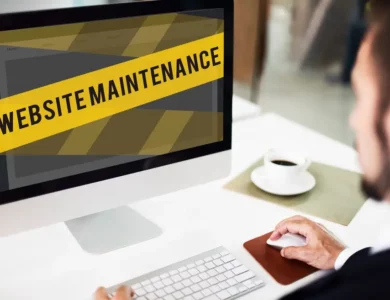
It’s never been easier to create a website in 2022. There are several website builder tools accessible at your fingertips, whether you’re creating an online store or a lifestyle blog.
However, the website design process takes a lot of time and work. There are various things to examine after you have established a website. You should think about all the conceivable complexities of web development for hours, yet you’ll always forget something. The finest websites necessitate extensive testing and planning. You must consider how a website will operate in the future, consider who will use it, and design its web pages to be user-friendly.
It’s also vital to safeguard the resource’s smooth operation and maintain its technical qualities. Because web design standards are so high, we’ve created a website launch checklist to assist you in meeting them. Check this Great article read here for top PHP web applications and what are the essential points to check.
15 web development checklists
Launching a website with a solid basis and no problems is a very different affair. You’ll need to take care of a few things beyond setting up a few pages and composing a copy for your website to get off to a good start. In this website launch checklist, we’ll walk you through each step you’ll need to do to ensure a smooth and successful launch.
The technical, testing, design, content, and marketing domains are all covered in this website checklist. Professional web designers and web design rookies who wish to become more organized and optimize the web development process would benefit from the website launch checklist.
Use the brief and concise website checklist to understand what elements require extra attention. It includes all the key stages necessary for a website audit before the launch. Continue reading to learn more details.
Technical
-
Confirm the code
Unless you’ve done so previously, the website launch preparation is your last chance to validate the code of your website. There are a number of online validators that can assist you with this task. As a general rule, it’s better to incorporate code validation early in the web design process rather than waiting until the website is live. Ideally, you should check the code at every step of the development process.
-
Check out the links
Because the web development process might be unpredictable, there’s a potential you’ve changed some of your website’s links. It’s now time to examine your link structure to see if it’s logical and consistent. Broken links degrade the usability and speed of your website, so you should fix them as quickly as feasible.
Consider installing the Broken Link Checker plugins if you have a WordPress-based website. Don’t worry if you don’t have a WordPress website. Online, there are a plethora of free broken link checkers and you could use any one of them. Don’t forget about the internal links as well. They help visitors navigate the website easily and also enhance SEO.
-
Make a backup of the website
Protect your idea once you’ve produced a fantastic website with excellent content and design. We are all aware that technical troubles can arise at any time, but we never anticipate it to happen to us. Make a backup of your website and test it after you’ve set it up. This will help you in case you face any problems in the future.
Testing
-
Check the usability
One of the most popular modern web design concepts is usability. Because of the fierce competition, retaining and engaging users are incredibly difficult. According to Business Achievers, if a website’s layout or content isn’t appealing, 38% of visitors would abandon it. People want simplicity and ease of use for websites. Make sure there’s a clear hierarchy and navigation, as well as logical elements present in your website.
-
Evaluate performance
Let’s have a look at the numbers. A website should load in fewer than two seconds, according to 47% of users. They might just leave if it takes too long to load. As a result, you should pay great attention to performance as you go through this website checklist. The best websites are not just attractive, but also quick and efficient.
Use PageSpeed Insights, for example. This free Google service is an excellent method to evaluate your resources and check where they might be enhanced.
-
Verify responsiveness
It’s important not to overlook the growing popularity of mobile devices. Furthermore, this pattern is unlikely to change in the near future. You need to check out how your website looks on different mobile devices with varying screen resolutions. Modern customers demand a consistent browsing experience on both mobile and desktop devices.
Website design
-
Verify images
Examine your website design once you’ve completed the technical and testing checklists. We’re confident you’ve included vibrant and intriguing photographs, but have you optimized them? It’s not just about appearance when it comes to web design.
To make your websites load faster, reduce the overall size of the images. To increase your search rankings, you also need to use alt attributes to your photos for SEO optimization. Check the great article read here for PHP web applications and why including a 404 page is very essential for effective web design.
-
Include a 404 page in your website
No one is immune to technical challenges when it comes to websites. Create a helpful 404 page that visitors will see when they try to access a page that doesn’t exist. It should complement your website’s appearance and encourage visitors to keep browsing. Aside from improving your look, such a page can also help you convert visitors and retain them on your website.
-
Check the design for consistency
Try putting yourself in your visitors’ position and evaluating your website’s overall impression. Do all of the elements appear to be in harmony and balance? Make sure that all of the colors, objects, shapes, and other aspects are in keeping with the overall theme. This will help to create a uniform experience.
Website content
-
Proofread your content
Any website launch checklist should include a content check. People frequently visit a website in order to obtain the required information, so its quality is critical. Check the published text’s spelling and punctuation, and proofread it thoroughly. Your professionalism and attention to detail are reflected in the content. You can also use Grammarly or another spellchecker to speed up the process.
-
Inspect the content of the test
Your website should not have any test content on it before the launch. On the live website, users don’t want to read meaningless material like “lorem ipsum.” This tiny blunder might damage your reputation and turn off users looking for high-quality information and expert services.
-
Check all forms carefully
Most modern websites employ forms to collect leads, advise users, and advertise products. Visitors to websites, on the other hand, are rarely keen to disclose their contact information or spend time filling out forms. If a form has errors or is completely unclear, the scenario could turn much more devastating. As a result, make sure to proofread all forms on your website, make them appealing, and include compelling calls to action.
Website marketing
-
Consider search engine optimization
SEO is a necessity if you want to develop and expand your website. The optimization will assist you in increasing the visibility of your resource and attracting free organic visitors. It’s preferable to implement your SEO approach ahead of time so that you can make modifications if necessary. You’ll need to do keyword research, optimize your title and meta descriptions, add links, and refresh your content, among other things.
SEO is a long-term investment that should be carefully considered from the start of a website’s development. If necessary, you can utilize the WordPress SEO Yoast plugin, which analyses content and provides recommendations for how to improve it.
-
Rely on directories
Surprisingly, online directories continue to be important. Submit your resource to relevant business and web directories to increase the effectiveness of your website promotion. It will appear more legitimate and trustworthy as a result of this.
-
Get started with SMM & blogging
SMM and blogging are the final items on our website checklist. You don’t have to start promoting your website months before it goes live, but you should at the very least plan ahead. Plan out promotions for your website and add the necessary functionality. Allow visitors to share and comment on your content in order to increase user involvement and brand awareness. Remember that marketing is an ongoing activity, so keep promoting your website on a regular basis.
Summing it up
In today’s competitive market, simply having a digital presence is insufficient to win. A functional, optimized, and interactive website is required to engage real human readers and capitalize on an opportunity. The internet is currently flooded with websites that lack both strong information and attractive design. Developers and clients, on the other hand, are both contributing equally to the present outbreak of design carelessness.
By now you might have a great article here for a PHP web application and understand what checklists to follow. You now have access to the most comprehensive web development checklist, which encompasses a variety of areas. The web development process is considerably easier to manage using these checklists. This checklist ensures website load speed and serves as a critical component in achieving top search engine rankings.
Every part of web development contributes to the web presence and guarantees results are already included in order to accomplish your desired final result.








very helpful thanx for writing this blog .
These are really useful information with valuable content. Appreciate it
Amazing article! It’s been a long time I have seen such an amazing written work.
The information you’ve shared in this blog is very remarkable. Thanks for sharing such a useful information.
Really informative content. Keep sharing such stuff.
Useful information that can help web developers learn new information and grow their skills.